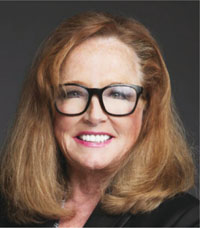Connecting people to new positions through networking andrecruiting is my passion, but how it's accomplished today haschanged significantly. For more than 20 years, Mitchell, Stankovicand Associates has dedicated resources to leadership developmentfor executives and volunteers within the credit union industry.There used to be 100 resumes for any one CEO position and now thereare fewer than 20, and they're mostly from bankers. You have toroll up your sleeves and engage with executives who are already ingreat positions. It is not only about compensation, it is aboutmatching talent to culture!
|The pace of business creates a dynamic, competitive environmentand success is directly related to the leader's ability to executekey strategic initiatives in a manner consistent with boarddirectives and member expectations. Credit unions are expected toface a leadership crisis in the next five years. It may be time toactivate the legacy – to get the most out of the credit union'slegacy team members and activate future leadership with the powerof institutional knowledge.
|The Social Security Administration estimates baby boomers areretiring at a staggering rate of 10,000 per day. This factorindicates that like other industries, credit unions will have asmaller talent pool available from which to fill managementvacancies. Credit union CEOs are also nearing retirement age.Industry research indicates 50% of credit union CEOs were eligiblefor retirement in 2013, signifying that half of the industry mayneed to be replaced.
|Leading a credit union is becoming more difficult as itscomplexity grows. Increased consumer demands, shrinking margins,competitive concerns and regulatory issues are all factors in thiscomplexity. At the same time, as the expertise required to manage acredit union increases, the number of qualified applicants isdecreasing. The entire financial services industry is facing areduction in the number of available executives with the requiredskills and experience, meaning credit union executives areattractive candidates for opportunities beyond credit unions. Thisdichotomy will impact organizational effectiveness.
|Who are the future candidates? Internal succession plans arebeing activated beyond the emergency document required byregulators and are becoming quite common. Firefighters First CreditUnion and SCE Federal Credit Union are just two examples oforganizations that have transitioned leadership internally. Theirboards engaged in active conversation and due diligence todetermine the next CEO.
|“Nearing Firefighters First Credit Union's CEO retirement, Iworked closely with the Board Succession Planning Committee tocreate an objective process,” Mary Steudle, SVP of human resources,said. “The committee was made up of current and past chairs toensure a protection of the firefighter culture and positioning forthe future.”
|SCE Federal Credit Union had both its COO and CEO retire withinsix months of each other. The leadership transition was considereda multi-year development process for all senior level executives.Individual development plans were created and the CEO sharedprogress with the board regularly. Dennis Huber, the long-time CEO,announced his retirement three years in advance to create atransparent and open leadership discussion.
|“I made changes to the organizational chart, adjusted reportingrelationships and asked managers to embrace change,” Huber stated.“It simulated an external leader's potential impact on theorganization and prepared all staff for my retirement.”
|
This example demonstrates the importance of deep bench strengthwithin a credit union. The Pew Research Center reported that as ofApril 2016, the millennial generation will have surpassed the babyboomers as the largest generation. There are significantdifferences between the generations. Millennials are changingbusiness trends and financial services will need to rely more onthis generation. However, credit union “boomer” executives andvolunteers are slow to integrate millennials into their leadershipdevelopment programs and are rarely seen in the boardroom. Thisneeds to change!
|Credit unions must make this transition of leadership style andunderstand that new CEOs will have different skill sets than theirpredecessors. The need for executive talent that combines theknowledge of the financial services generalist with theorganizational specialist necessitates a multi-dimensional leader.The expertise required based upon current market conditions is morecomplex and the competition for talent has increased, resulting inthe need for competitive compensation packages.
|The responsibility to recruit, select and assimilate new CEOswill fall on a volunteer pool that is also aging. The value ofenergizing and educating the board of directors on the realities ofCEO replacement cannot be understated. Board members must knowthere may be sticker shock as they adjust compensation relative tothe market and that CEO contracts are now written with change ofcontrol clauses based upon current merger trends. Million-dollarretirement plans and customized benefits are the norm and shouldn'tbe gasped at. The board must consider its compensation philosophyand establish targeted baselines that reflect appropriate marketpositioning while remembering that their philosophy will impacthuman resources' ability to recruit and retain talent. Is yourtarget to be within the 50th percentile or 75th percentile, orshould your target be subjectively established based uponindividual skill set?
|The following are trends and an overview of the componentsrequired for a credit union to recruit the best and brightestcandidate in today's market.
Competitive base salary compensation will compare credit unionindustry data as defined by peer, regions and localized marketconsiderations. The 2016 CUES Executive Compensation Survey reportsCEO compensation levels increase as asset size categories increase.Base salary is not determined by the retiring CEO's compensation;it should be reflective of the current market conditions. A bestpractice for a high-performing board is to determine what the “new”CEO salary requirements will be and begin to adjust the retiringCEO compensation to that level. It is the right thing to do for thecredit union and creates tremendous goodwill internally.
It should be noted that an external candidate may require highercompensation to make the change and internal candidates will alsoneed a base adjustment. The significance of the adjustment rangesfrom 15% to 30% based upon the credit union's asset size.
Recognize the importance of performance-driven incentive. Themajority of credit unions have a board-discretionary “at riskbonus” plan and most are transitioning to a performance metricsystem. According to the 2016 CUES Executive Compensation Survey,the majority of credit unions polled paid an incentive to theirsenior management team. The percentage of compensation fluctuatedand was often driven by asset size. For those credit unions in the75th percentile, the bonus payout for the CEO ranged from 15% to23%.
Comprehensive executive benefits are still critical (health,life, vision, dental, 401(k), etc.).
Supplemental executive retirement plans, or SERPs, areconsidered retention tools and often required at the time of hire.D. Hilton's 2015 SERP Survey indicated 38% of CEOs received a SERPwithin three years of hire and 72.5% of CEOs reported that the SERPis a meaningful retention tool.
There are big challenges ahead that require modernization ofleadership transition practices throughout the credit unionindustry. Activate the legacy of your existing senior leadership,executives and volunteers to create a win-win scenario. Thisstrategic thinking is critical from the beginning as it sets thestage for long-term organizational health and member value.
| Susan Mitchell is CEO of Mitchell,Stankovic and Associates. She can be reachedat 855-362-2002 Ext. 701 or [email protected].
Susan Mitchell is CEO of Mitchell,Stankovic and Associates. She can be reachedat 855-362-2002 Ext. 701 or [email protected].
Complete your profile to continue reading and get FREE access to CUTimes.com, part of your ALM digital membership.
Your access to unlimited CUTimes.com content isn’t changing.
Once you are an ALM digital member, you’ll receive:
- Critical CUTimes.com information including comprehensive product and service provider listings via the Marketplace Directory, CU Careers, resources from industry leaders, webcasts, and breaking news, analysis and more with our informative Newsletters.
- Exclusive discounts on ALM and CU Times events.
- Access to other award-winning ALM websites including Law.com and GlobeSt.com.
Already have an account? Sign In
© 2024 ALM Global, LLC, All Rights Reserved. Request academic re-use from www.copyright.com. All other uses, submit a request to [email protected]. For more information visit Asset & Logo Licensing.









